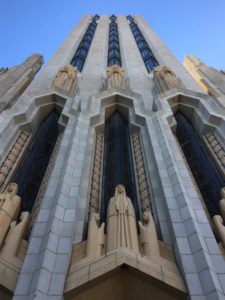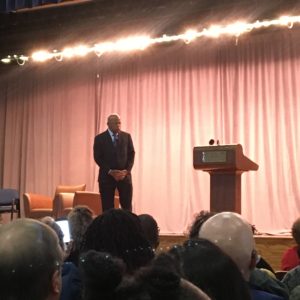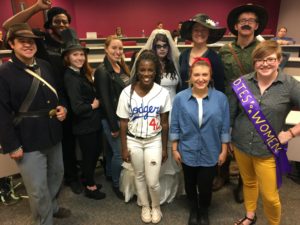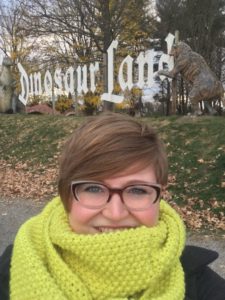This is Part II of a discussion of my Fall 2016 Introduction to Cross-Cultural Studies class. Read Part I here.
Self-Reflection: What Worked & What Didn’t
In my previous post, I talked in general terms about my approach to the class and the outcomes. In this post, I’ll break down which elements of the class worked and which didn’t, and examine how I might incorporate the successful elements in my current and future classes.
Journals
Each week, students turned in journal entries on the assigned readings. The entries were due on the day of class discussion, which helped ensure that students came to class having read and prepared to discuss the readings. These are the guidelines for journals from the syllabus:
- The journal entry must contain at least one substantive comment or question for each of the assigned readings. You can state this in one sentence, and a rambling paragraph is not a substitute for substance. Your journal should include at least two questions about the topic to discuss in class.
- You can write informally (use bullet points, etc), but your writing must be intelligible. I won’t be marking you on grammar, but I have to be able to follow your thoughts.
- You must be prepared to discuss your comments and questions in class.
- You will not receive credit for entries that only restate what the article says. I want to know what you think about it.
- You will not receive credit for vague comments like “The article was interesting” or “I agree with the article.” Why do you agree? What was interesting?
I expect your journal entries to reflect your growth as a scholar and critical thinker. An “A” journal entry at the start of term may not be one at the end.
I had both under- and upperclassmen, and the journals helped put them on more equal footing for class. I gave students substantive feedback on their journal entries, and most of my students grew in response to the feedback. I enjoyed getting to read the journals.

I also gave more specific journal entry questions for some readings. When they read about AIM survival schools, I asked them to reflect on how education developed or erased tribal identity. When they read about the history of rap in Cape Town, I asked them if any artists or songs spoke to their sense of who they are. These questions helped them focus their reading, especially my students who had less experience with critical analysis.
The major drawback to the journals was the time it took to mark them and give feedback. It was easy for me to get behind, given my extremely intense schedule (I taught three different preps and worked 20 hours a week at the Tennessee Historical Society), and this is something I would want to do better with if I assigned them again. It is unfortunately not something I see as practical in much larger classes, but I am considering different ways to get the same outcome. Suggestions in the comments or directly to me are greatly appreciated.
Participation
I wanted thoughtful, informed discussions with as many students involved as possible. I did not want to spend discussions with a list of students rating the number and quality of their comments. After reading around, I decided to ask my students to set participation goals for themselves. This seemed like a cop out to me, since I prefer to control and predict everything that goes on, but the concept made sense. They wrote their goals on the first or second day of class. I asked them to think about their personalities and strengths. If they tended to talk a lot in class, maybe they wanted to work on listening and participating without dominating the discussion. If they were introverted and nervous, maybe they wanted to work on having a prepared comment to share once or twice a week and build up to spontaneous engagement.
They held onto their goals, and at the midterm and final I asked them to briefly reflect on their goals in a paragraph to me, and to include a self-assessed grade. I gave them substantive feedback at the midterm, and met with some students individually. I also asked them to give me feedback on how I could encourage better participation. Many of them suggested having them speak in smaller groups, rather than to the entire class. Since the classroom was arranged with small tables, I took this on board and had them discuss questions at their tables before opening the floor. I was able to visit the tables and get a sense of who was engaging, who was quiet but attentive, and who was just texting. This also helped them bond with each other, and the more talkative students were thoughtful about drawing out their more reticent classmates.
We did the same exercise at the final, and I found that most of my students worked harder on their goals to get better, and that the changes they suggested worked well. This is something I’ve tried to incorporate into my larger classes. It’s more difficult with a survey of 35 students, but they are better at talking to each other in groups than they are at talking to me in front of their classmates.

The combination of the participation component and the journal worked well. When I met with students individually, I was able to tell the quieter students that I could tell they were doing thoughtful reading and had good ideas that I wanted the entire class to benefit from, so that it was constructive feedback (“Share your insights with your classmates”) rather than criticism (“Why don’t you talk more?”). It also helped create the sense that this was a group effort; it wasn’t about me pulling teeth, it was about us creating a good discussion together so that we could all stay awake and enjoy our 9am class.
Final Thoughts (for Now)
This isn’t a complete postmortem on this class, so I may revisit these posts or turn this into a series on teaching. I really enjoyed teaching this class, and I want to find ways to make all of my future classes as enjoyable as this one was. There are a lot of intangible factors that make for a successful class. I had a wonderful group of students whose company and conversation I enjoyed and who were willing to go along with me as I figured out what I wanted to do. I learned a lot about relaxing and going with the flow last fall, and hopefully that has carried forward into this semester and will stay with me as I continue teaching and learning.

